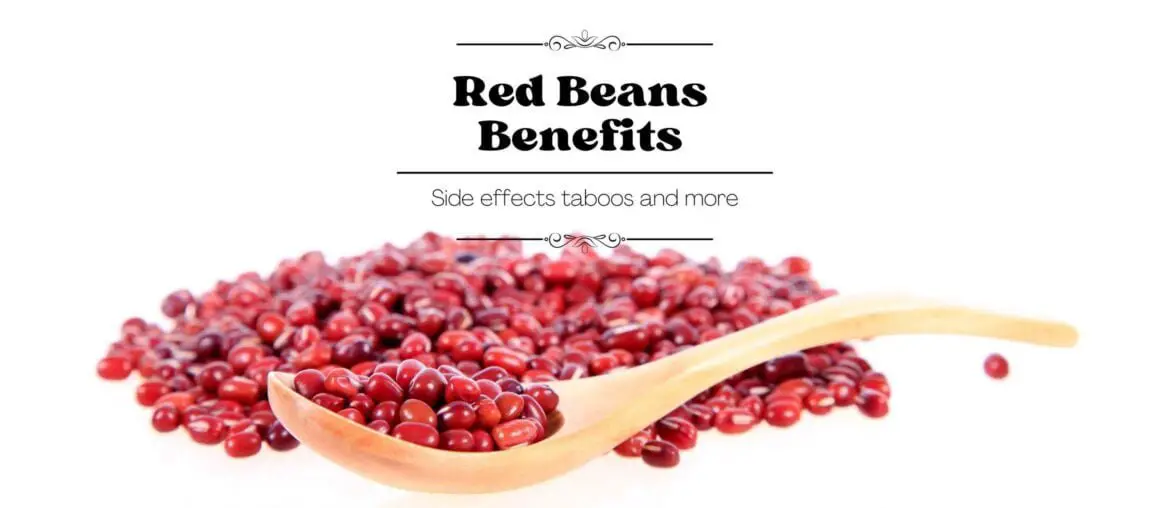Red bean is a common kind of cereal. Because it is rich in nutrients, most people like it very much. Eating red beans often can bring many benefits to the body. For example, it can nourish the heart and blood and eliminate edema. You can make many delicious foods using red beans. What are the benefits of red beans? What are the taboos about eating red beans? There will be a detailed introduction below.
Nutritional value of red beans
The nutrients contained in red beans exceed many foods, such as wheat, millet, corn, etc. The analysis of relevant food experts shows that the protein content of red beans is 17.5%-23.3%, the starch is 48.2%-60.1%, and the dietary fiber is 5.6%-18.6%.
In addition, red beans also contain a variety of inorganic salts and trace elements, such as potassium, calcium, magnesium, iron, copper, manganese, zinc, and so on. The nutritional content of red beans is similar to the familiar mung beans, and some even surpass them.
The red bean is rich in starch, which is also called “rice bean.” In addition, it has the functions of “body fluid, urination, swelling, swelling, and vomiting.” Therefore, it is an indispensable high-nutrition and multi-functional grain in people’s lives. It is the dried and mature seeds of the leguminous plant red bean and is harvested in autumn when the fruit is mature without cracking.
The lysine content in red bean protein is high, and you should mix it with cereals to make bean rice or bean porridge. Red beans are delicious food and a magic medicine for doctors to cure diseases. They have the effect of dispelling dampness and invigorating the spleen. They are more suitable for people with weak spleen and stomachs, edema and relieving heat, detoxification, stomach, and other purposes.
Potential benefits of red beans
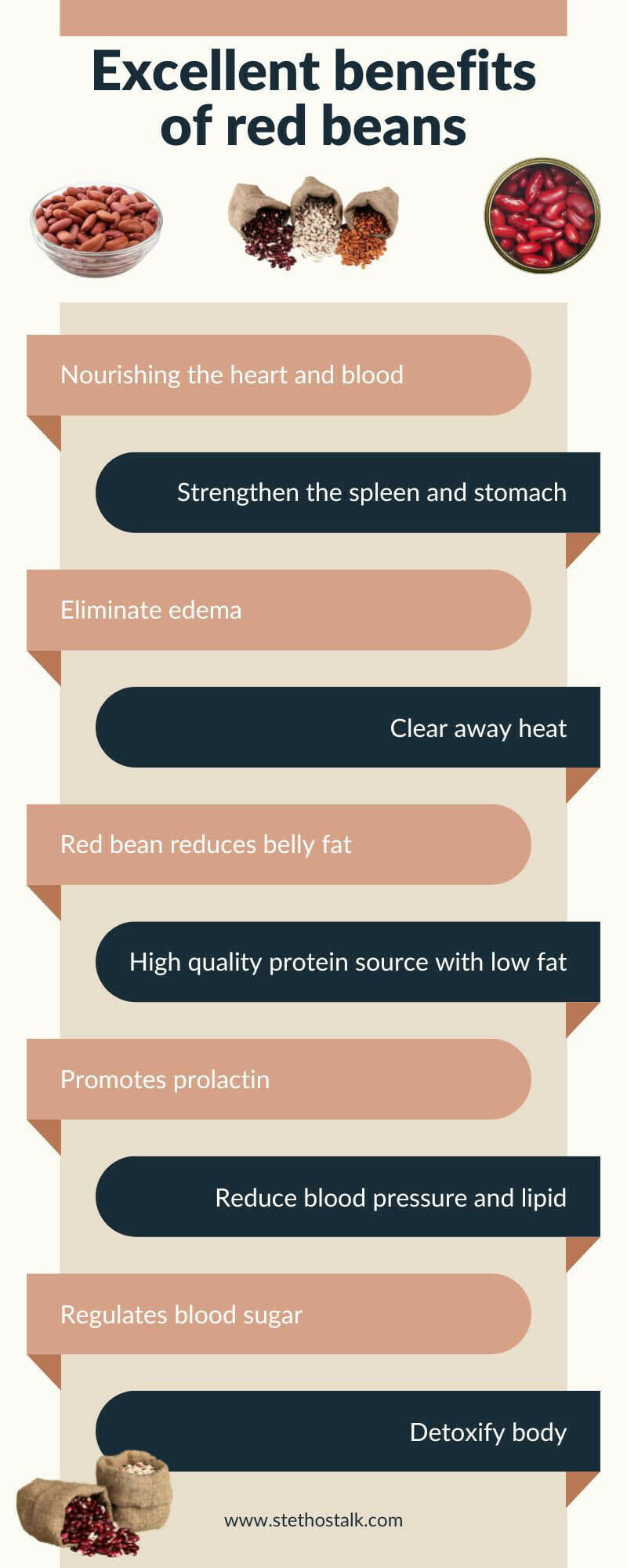
- Nourishing the heart and blood.
In ancient medical books, red beans were called “the valley of the heart,” which mainly strengthened the heart nourishing effect of red beans. When red beans arrive in the body, they can clear the heart fire and replenish the blood. It is rich in crude fiber. Usually, eating it can reduce blood lipid and blood pressure and improve the function of heart activity.
- Strengthen the spleen and stomach.
Many people don’t know that red beans can help people strengthen the spleen and stomach. Red beans have relatively strong digestion ability and good absorption. Weak friends should step up the tonic in peacetime to have better energy and stronger strength. People know that red beans will not get sick.
- Eliminate edema.
Red bean is a very nutritious food. It contains a variety of substances needed by the human body. Red bean is rich in potassium, and the saponin contained in red bean skin has a strong diuretic effect on our body. Eating red beans can effectively relieve the edema of the face and feet caused by beriberi and kidney function decline.
- Clear away heat.
Red beans are rich in B vitamins and iron and protein, fat, sugar, calcium, phosphorus, niacin, and other components. Those elements have the effects of clearing heat, diuresis, dampness, and detoxification.
- Red bean reduces belly fat.
Although there is no so-called slimming food, red beans with high dietary fiber content can promote the discharge of intestinal waste. In addition, although the fat is not really reduced, the stomach naturally feels flattered when there is less garbage, which is also one of the effects we pursue.
- A high-quality protein source with low fat.
Women who lose weight refuse those foods with high-fat content, but they are also an essential source of high-quality protein. Without the importance of high-quality protein, it is needless to say that it is indispensable for dirty skin, hair, teeth, bones, and organs. Red beans have high protein content, a reasonable absorption rate, and low calorie and fat content.
- Promotes prolactin
Another significant feature of red beans is that they have an effect on promoting milk. This is because red beans are a food rich in folic acid. As a result, maternal and lactating mothers eat more red beans to promote lactation. Therefore, many women will make some red beans to enrich their milk after giving birth.
- Reduce blood pressure and lipid
Red beans have good blood pressure-lowering, blood lipid-lowering, blood sugar regulation, and blood pressure control effects. It will make blood pressure easier to control, dilate capillaries, reduce blood viscosity, and improve microcirculation. Patients with high blood pressure and other patients can often eat red beans to relieve physical discomfort.
- Regulates blood sugar
Potassium deficiency in some people will cause sugar reduction, which will make it difficult to control blood sugar. At this time, red bean is a typical high-potassium food, which can help diabetic patients better control blood sugar. In addition, the red bean is rich in dietary fiber. As a result, it has laxative functions, lowering blood pressure, lowering blood fat, and regulating blood sugar.
- Detoxify body
Red bean has a strong antibacterial effect and can be used to assist in the treatment of sores and other diseases. In addition, the red bean can detoxify and is beneficial to patients with heart disease, kidney disease, and edema.
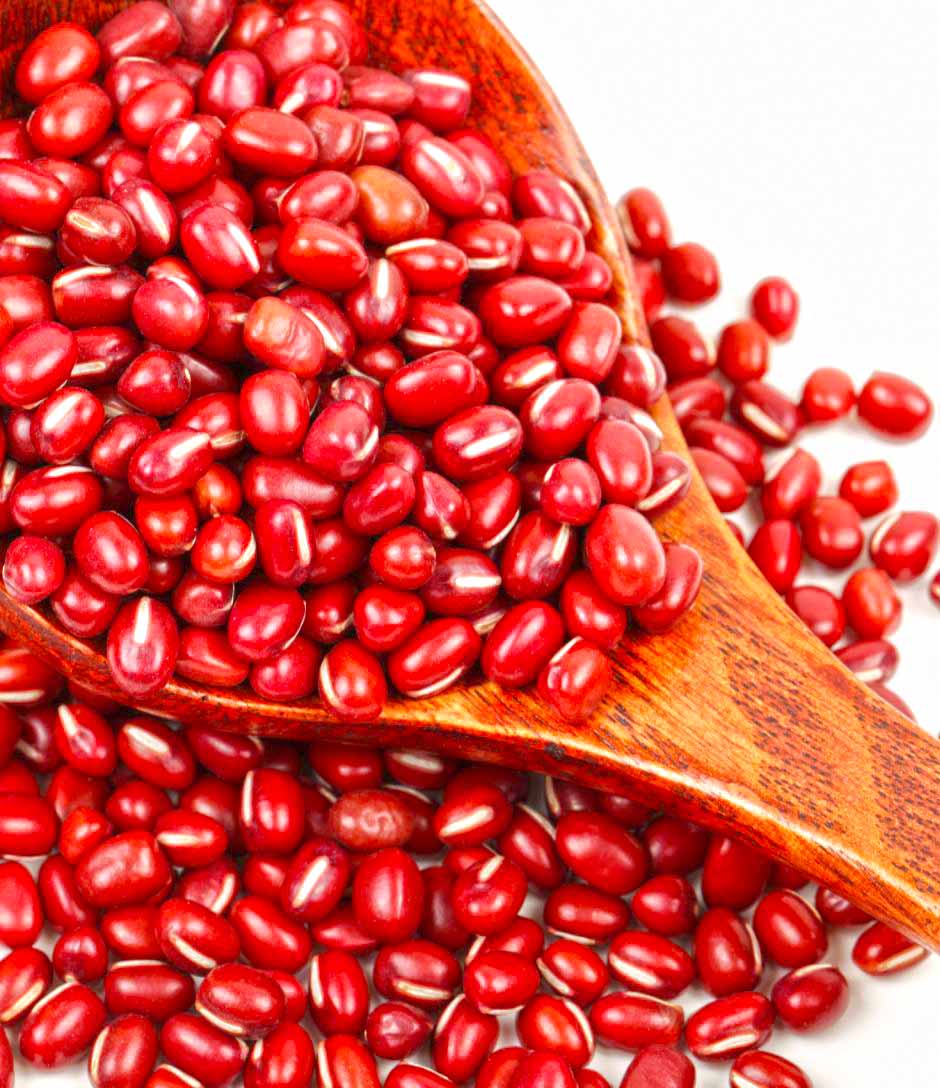
Who is most suitable for eating red beans
- Red beans are suitable for people with various types of edema, including renal edema, cardiac edema, cirrhosis ascites, malnutrition edema, etc.
- Red beans are suitable for postpartum lack of milk and postpartum edema. They can eat it with red bean soup or porridge alone.
- Red beans are suitable for people with obesity.
- Red beans can clear waterways, so people who urinate a lot should not eat them. Likewise, people who snake bites should not eat them for 100 days.
The taboos about eating red beans
1. Don’t boil red beans with rice. Otherwise, it will easily lead to oral sores.
2. Red bean has specific medicinal properties. After entering the body, it has a good effect on diuresis and swelling and maintains and promotes cardiac activity. However, suppose salt is added during the cooking process of red beans. In that case, it will fail to improve the efficacy of the medicine and even reduce its efficacy.
3. Red beans have a good diuretic and swelling effect and can effectively promote intestinal peristalsis’s speed. Therefore, I suggest that some patients with weak gastrointestinal function should not be greedy when taking red beans daily.
4. Red bean glycerin has a diuretic effect after taking it. Therefore, you must not eat more at ordinary times. Otherwise, it is easy to have more urine and body weight loss.
5. If a snake accidentally bites you, it is recommended not to take red beans within 100 days to avoid affecting your health.
6. You cannot take red beans together with mutton, lamb liver, and lamb tripe. Otherwise, it will cause significant damage to the body and easily lead to poisoning.
7. It is not recommended for patients with more urination to take more red beans. Otherwise, frequent urination will be more serious.
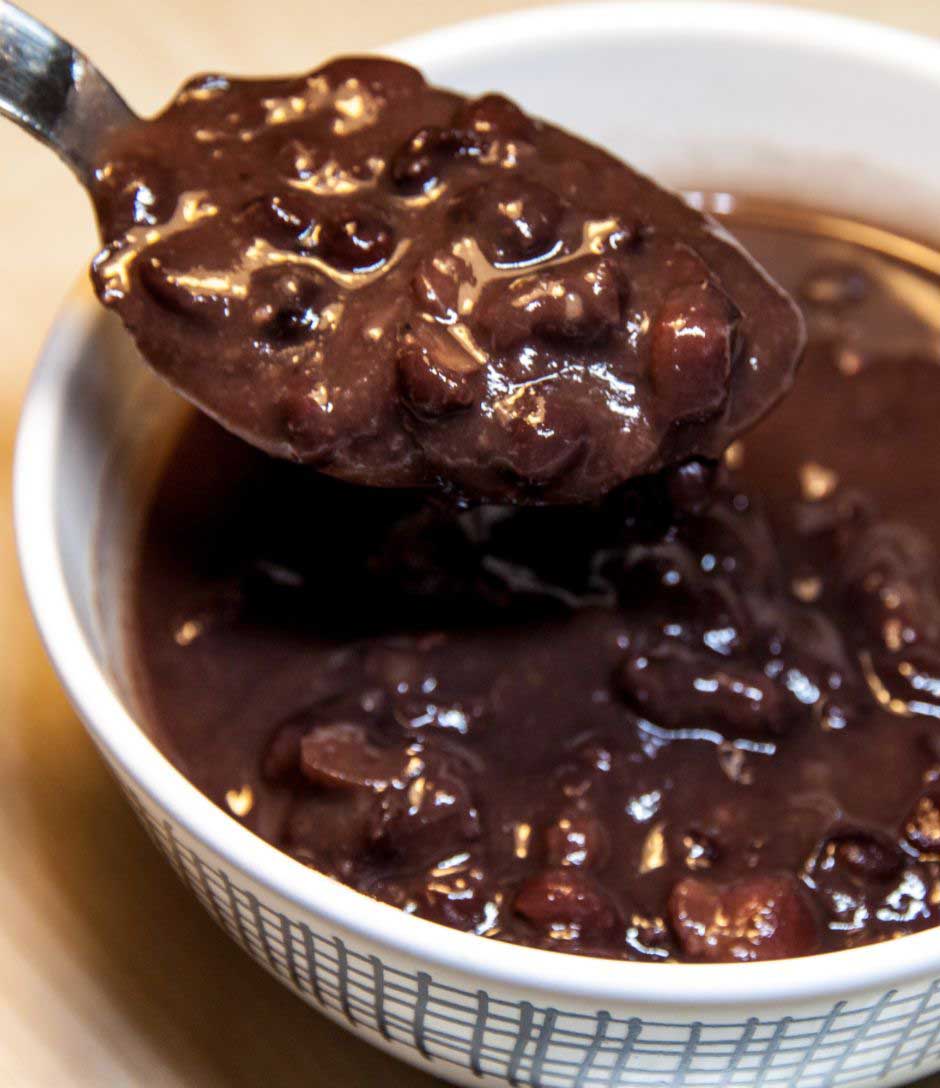
Side effects of eating red beans
Red beans are a gas-producing food. If they are eaten for a long time, they may cause diarrhea and abdominal distension. People with weak spleen and stomachs should not eat them for a long time.
Red beans contain a lot of purines, which are the main cause of gout, so people with gout and rheumatoid arthritis should not eat more.
Red beans are a kind of dry food. Therefore, people with diarrhea, dry mouth, and indigestion should not eat red beans. Otherwise, it will aggravate the symptoms.
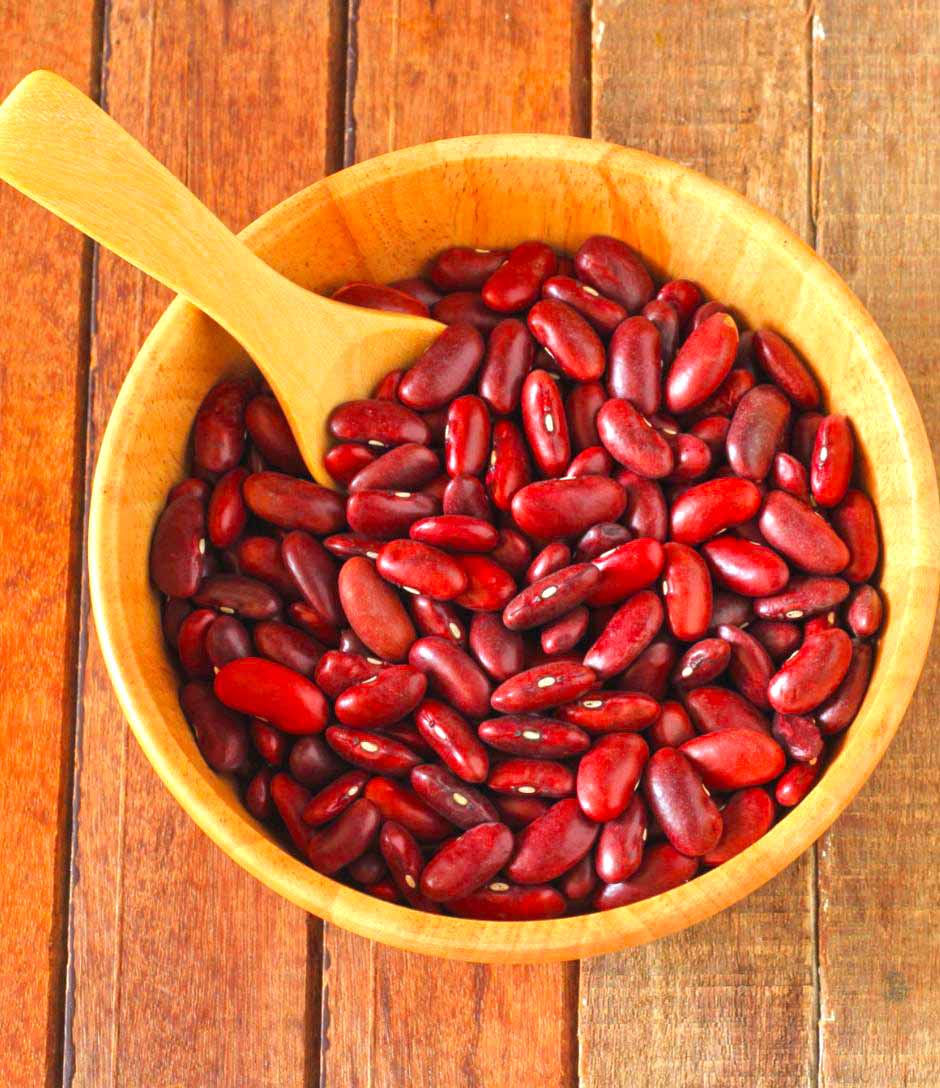
Conclusion
The efficacy and benefits of red beans have been introduced to you above. We should now have some understanding of red beans. People who like to eat red beans can eat a little more at ordinary times. Diseases also have good effects, but people should know their taboos when eating red beans.

